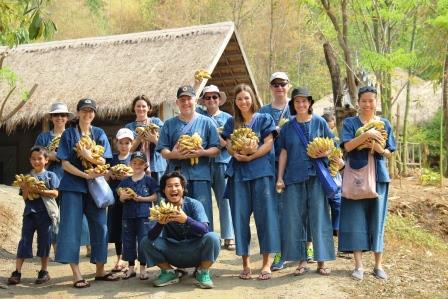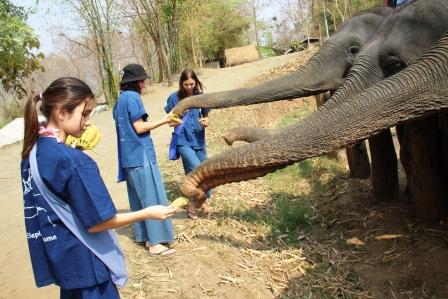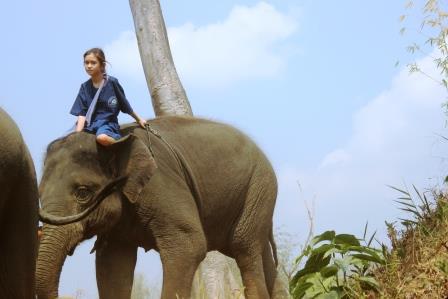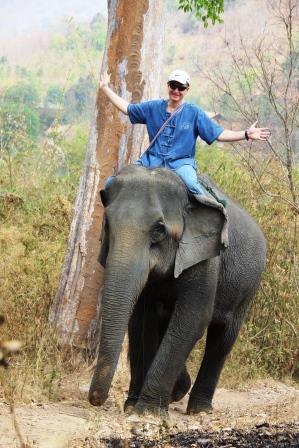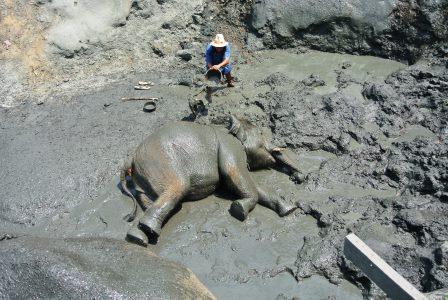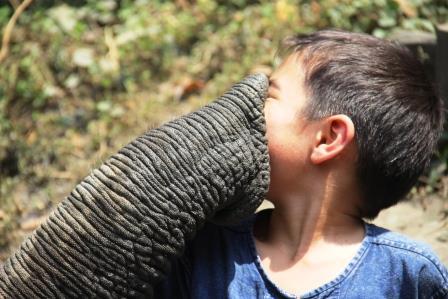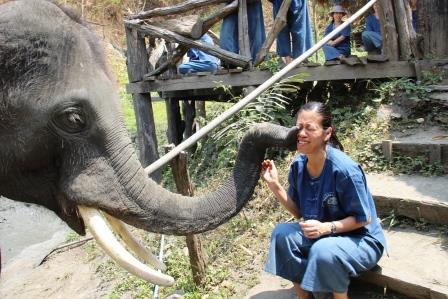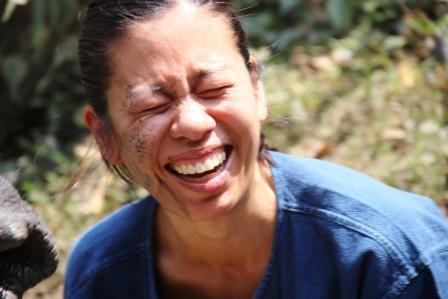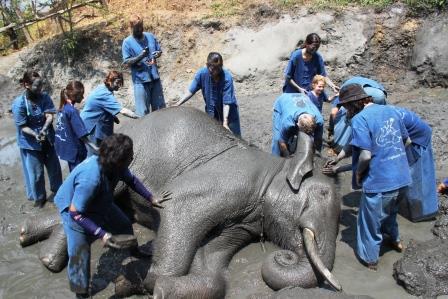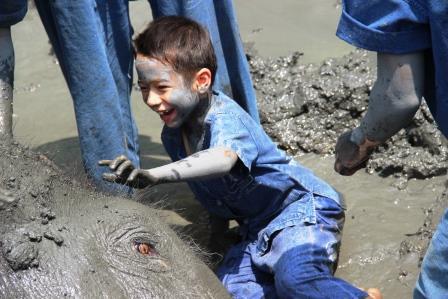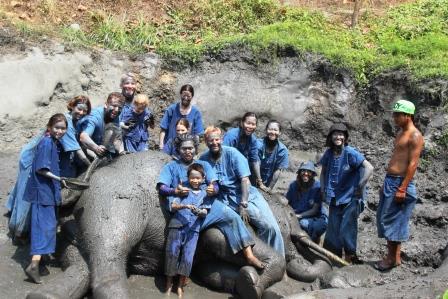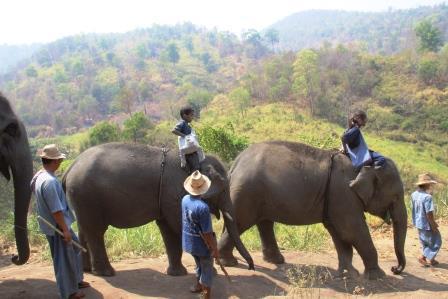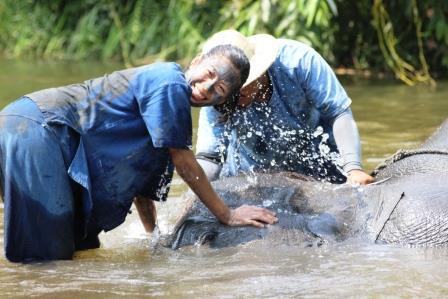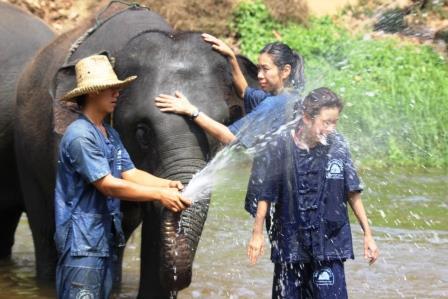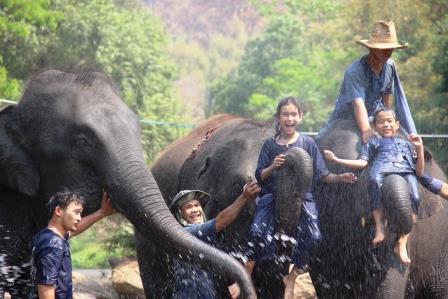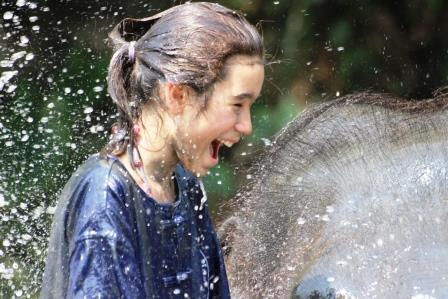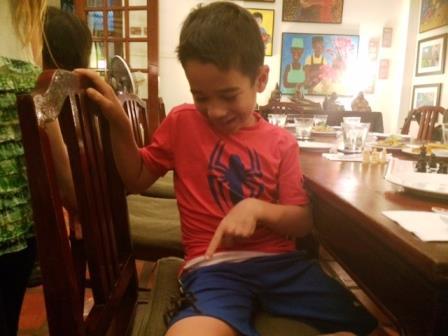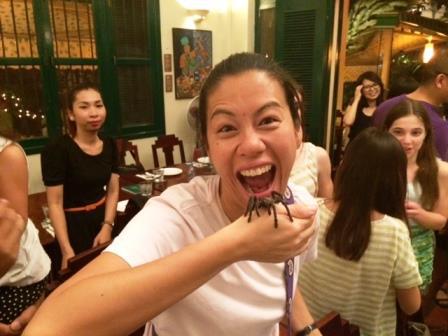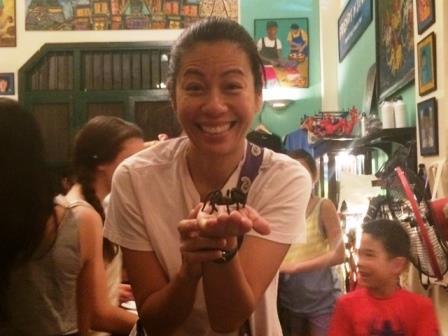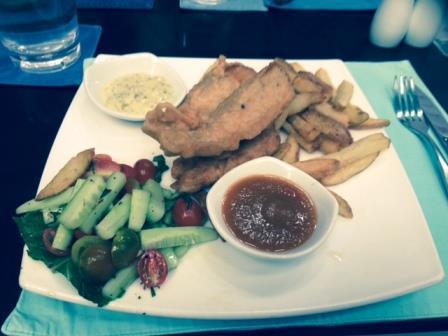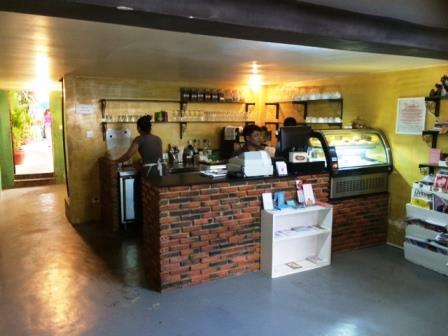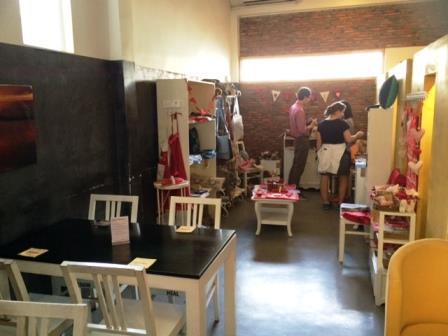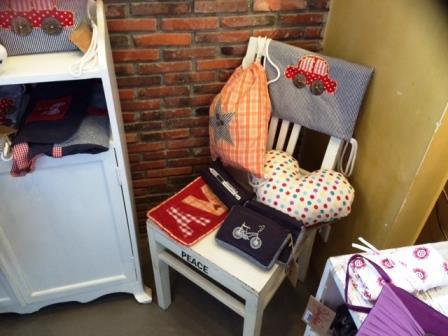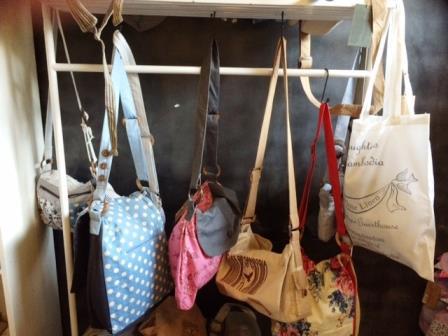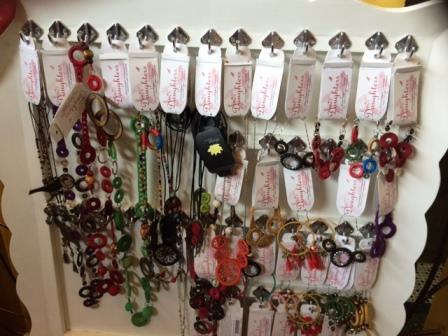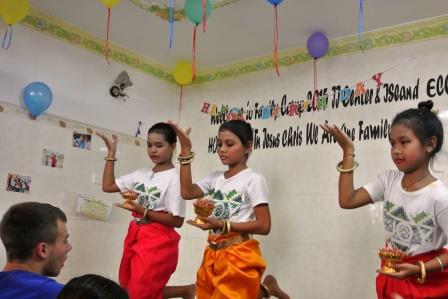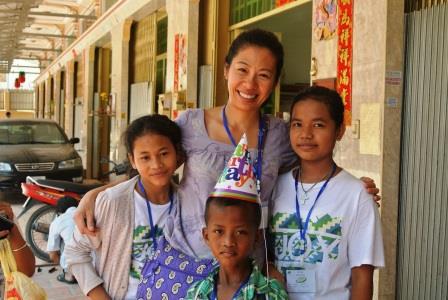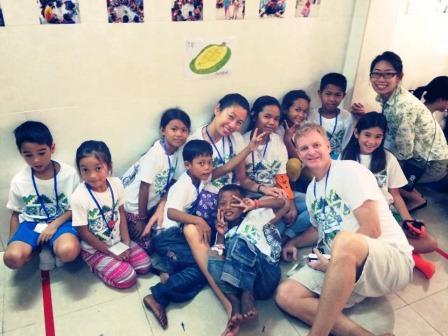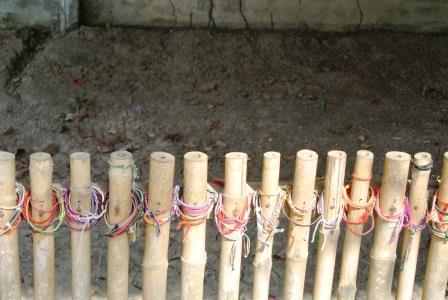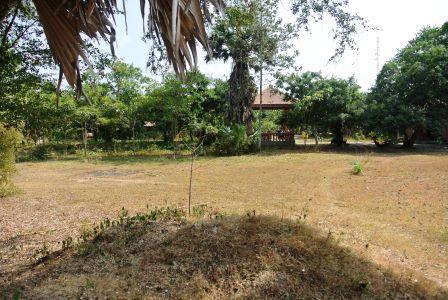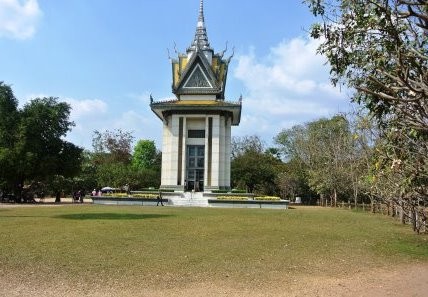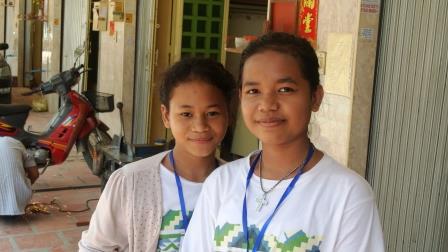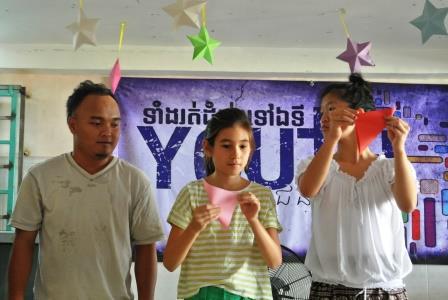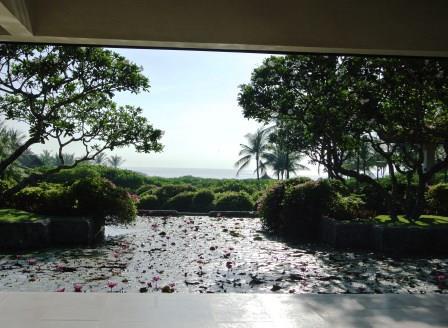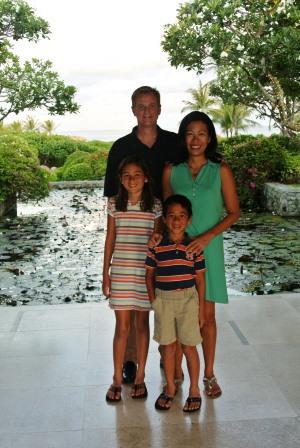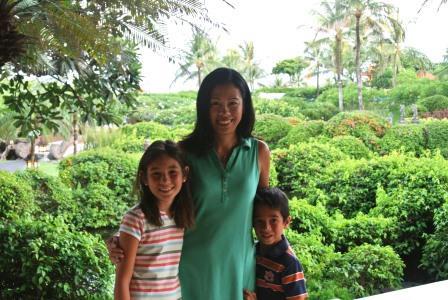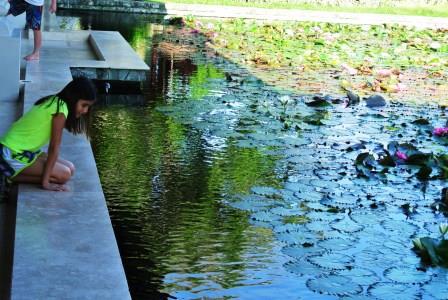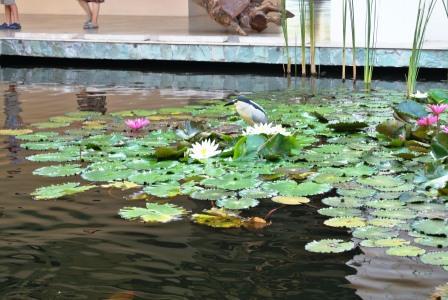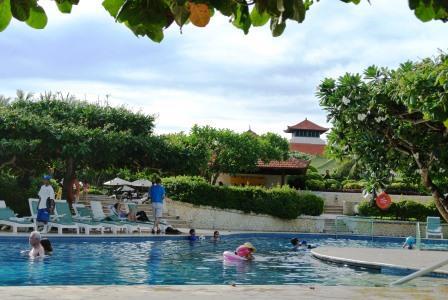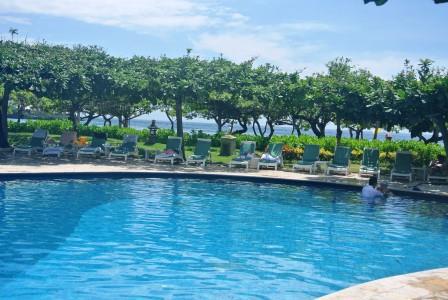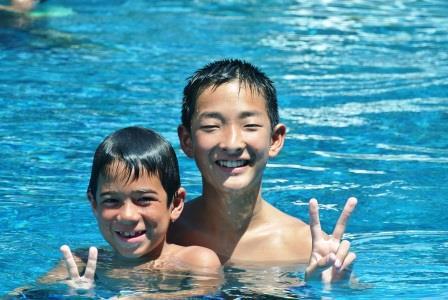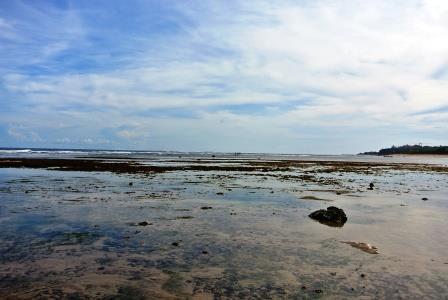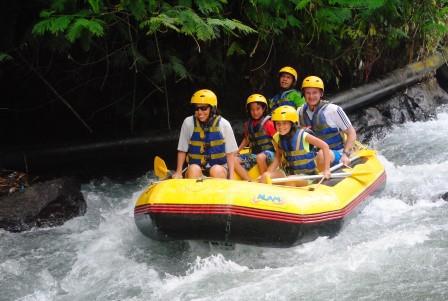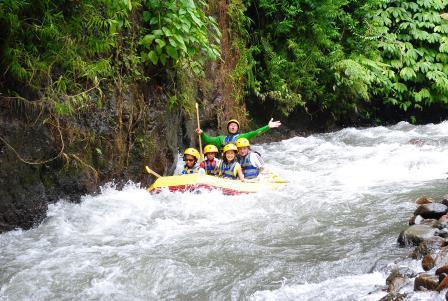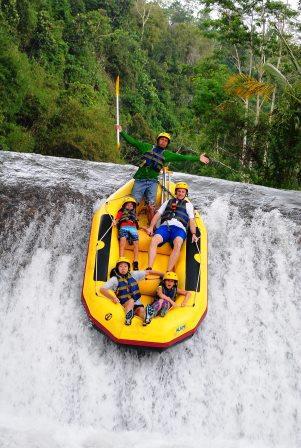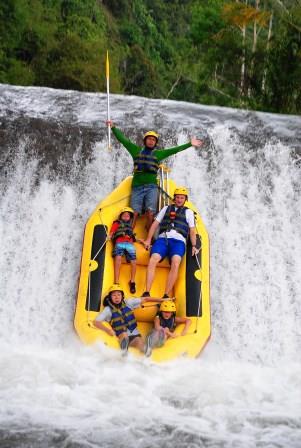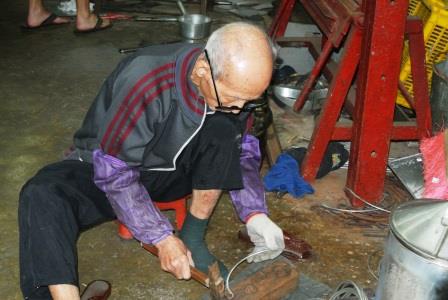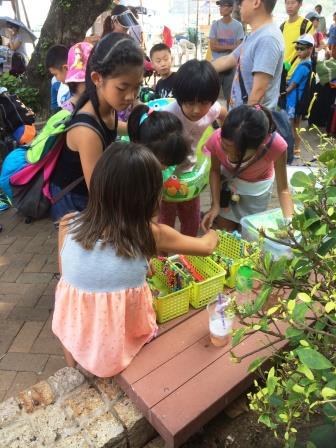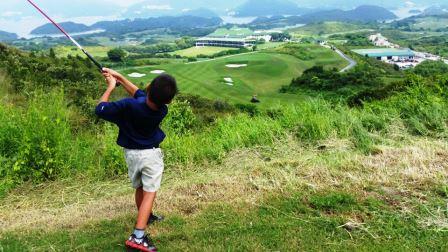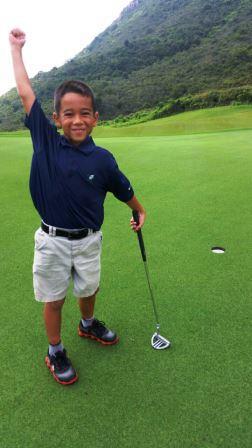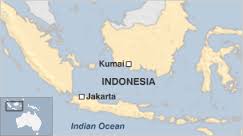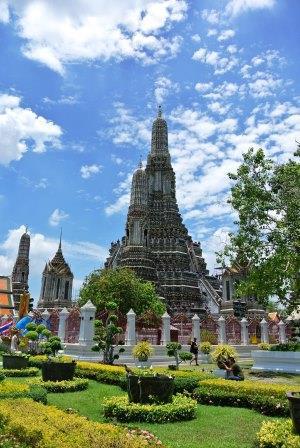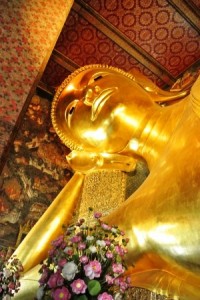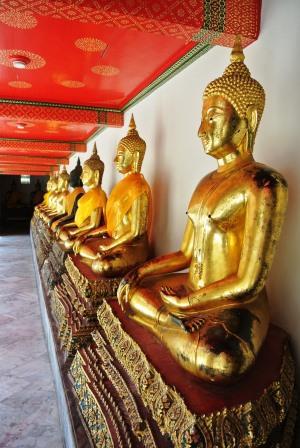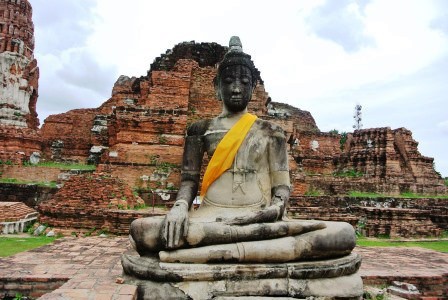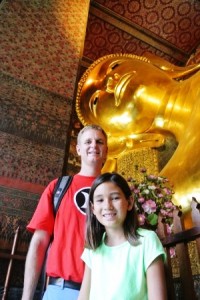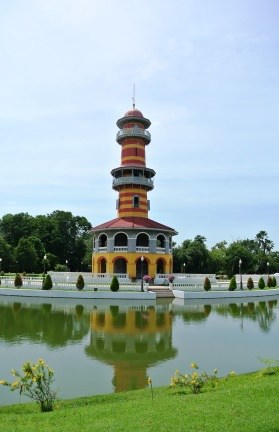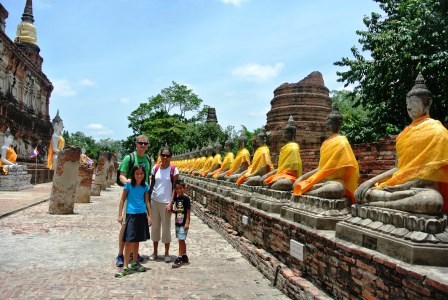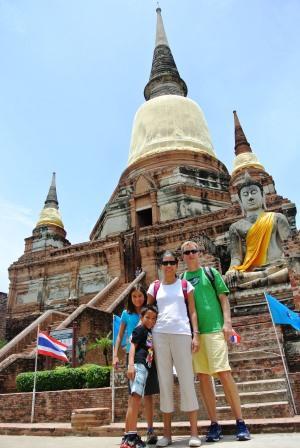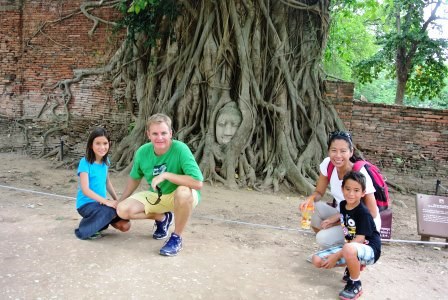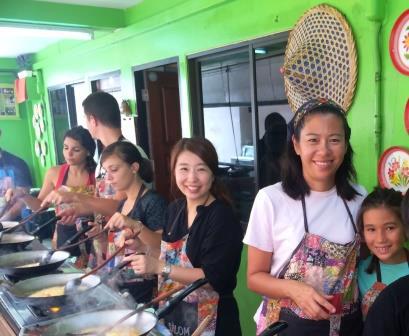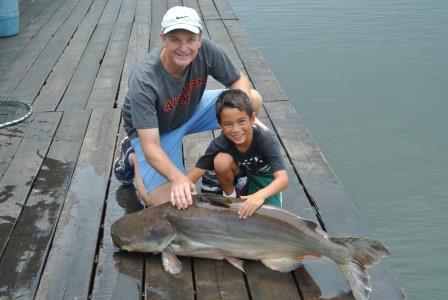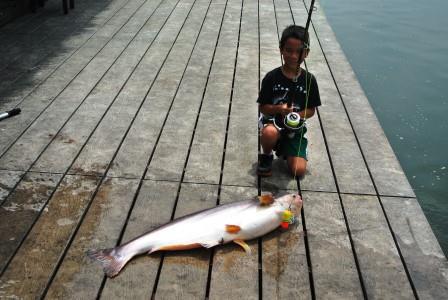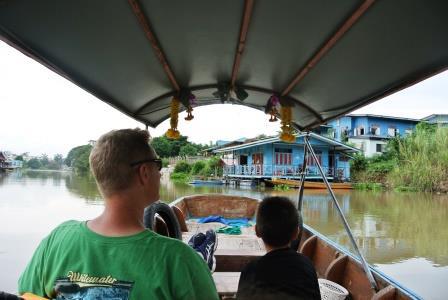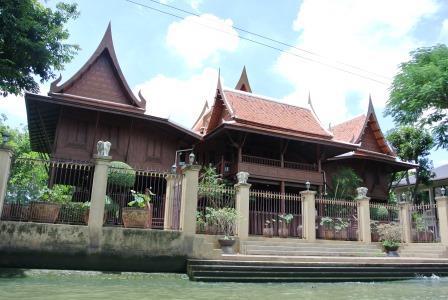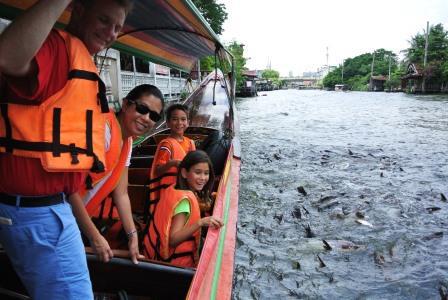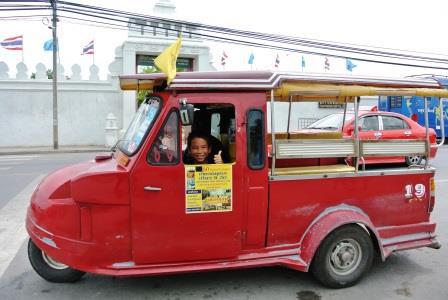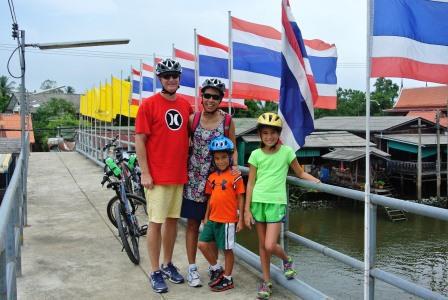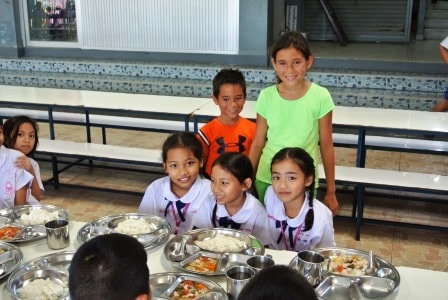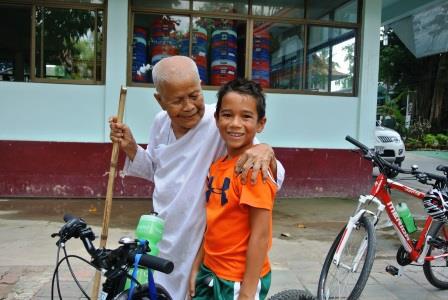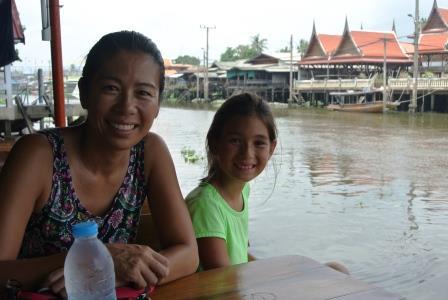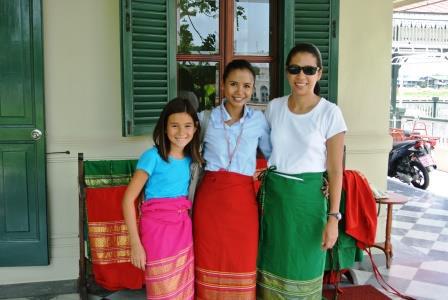At long last, the orangutans. I must give you advance warning that I went a little ape-you-know-what taking photos of the orangutans. After my experience with pandas and now orangutans, I have decided that I may have missed a calling in my life to be some sort of zoologist. Long after Benjy and the kids had said “enough with the orangutans already,” I could have kept watching them all day long. So, there are A LOT of photos. I’m also going to spend some time writing down the stories I heard about some of the orangutans. I never grew tired of hearing them. Yes, I know it might get boring, but I’m doing this actually for my own benefit so that I won’t forget. You can just skim over it all if you aren’t interested.
We entered the preserve.


Now I’ll turn it over to Webley.
The Tanjung Puting National Park is located in southern Borneo close to a town called Kumai. The park has an area of 160 square miles. It officially became a national park in 1982. The park also has the largest orangutan population in the world.
There are about 6,000 orangutans in the preserve. The name orangutan means in Indonesian and Malay “people that live in the jungle.” In the park there are two different types of orangutans, wild and semi-wild. The difference between wild and semi-wild is that semi-wild have at one point in their lives lived with people and are not afraid of them. Also, semi-wild orangutans like people food while wild ones only eat fruit and termites.
Wild orangutans normally live not more than 60 years. But, orangutans in captivity can live for more than 60 years. Some males can grow to be 300 pounds. Females grow up to be less than half that size. Females are normally 15-16 when they have their first baby. Most mothers in the wild wait 8 years between having each baby. The reason for this is because baby orangutans do not leave their mothers until they are 10 years old. The baby still visits its mother until it is 15-16 years old.
Each area of about 10 kilometers has a dominant male. The dominant male is the king of that area. He gets to eat first and is the father to all of the babies. For an orangutan to become the dominant male it has to beat the old dominate male. This fight lasts 9 days and is not meant to kill the old dominant male. Once he is defeated he must find another area to live.
In the world there are two kinds of orangutans: Borneo orangutans and Sumatra orangutans. The Borneo orangutans grow larger and there are more Borneo orangutans than Sumatra ones. The Sumatra orangutans live all over the world, but the Borneo orangutans only live in Borneo.
Now I will tell you about some of the orangutans I saw.
This orangutan is Gundol. He is 23 years old. Gundol is the dominant male in this area. You can tell he’s the dominant male because he has the large cheek bags on his face. He weighs about 125 pounds. When he was at the feeding station, he got to eat first while everyone else there waited in trees nearby. No one dared take a turn until he left.





Once he was finished eating, he climbed a tree and started “singing” which surprisingly sounded a lot like a whale song. Then he started “whoo, whoo…..prrrrrrr….whooo, whooo…prrrr” alternating between sounding like an owl to sounding like a cat purring, all done very loudly. See, I told you I should have been a zoologist. Joe told us he was announcing to everyone that he was still the dominant male in the area in case anyone had forgotton. After Gundol left, the others got to eat.
This is Cedang and her baby Casateao.



Cedang is 32 years old, and her baby is 2.



I’m not sure what the name of this orangutan is, but the man below has a big bag of bananas on his back. The orangutan was shimmying down to grab one out of the bag.

This is a teenager Maraeo. He is 9 years old. He likes to hang out at the boat dock in hopes of scoring some food from the tourists. In this picture he was making kissing sounds. This means that he is hangry (hungry and angry).

One of our female guides, Siti, told us a funny story about Maraeo. Orangutans’ favorite fruit is durian. Durian is a VERY STRONG smelling fruit and many hotels in Asia have a “no durian policy” for their little room refrigerators because the fruit stinks them up and it’s so difficult to get rid of the smell. I took this picture in our hotel room. Obviously, it’s a problem deserving its own prohibition sign.

I actually don’t mind durian, the taste or the smell, but I can see how some might find it offensive to the senses. There’s a smaller variety of durian that grows in the jungle and Siti loves it too. One of the rangers had picked some durian fruit for Siti and gave it to her to take home to eat.
The ranger warned her to watch out for Maraeo when she gets on the boat because he loves durian and he can smell it from a long ways away. So, she hid it under her clothes. As she was approaching the boat dock she saw no sign of Maraeo and thought the coast was clear. Then, out of nowhere, Maraeo appeared. She screamed and began running and Maraeo starting chasing her and grabbed her feet. Normally, orangutans seem to be these docile, slow-moving creatures when they aren’t in trees. But, I guess they can run fast when properly motivated! She dropped the durian and he let her go. Then, she ran to the boat, durian – less.
Here are some pictures of Maraeo with the kids. Since Joe was a park ranger and now a guide, many of the orangutans know him and the sound of his voice. Joe had a banana and gave it to Maraeo so he’d let the kids take a picture with him.


We went to another feeding station and saw some more orangutans.


This is a male orangutan who is about 16 years old. He’s just starting to develop the cheek bags on his face.

This one is of a mommy orangutan and 2 babies. The bigger one is about 8 years old and the smaller one is less than a year old.

I don’t know how the mommy orangutans do it. They swing through the trees with their babies constantly clinging to them. You can see how the older one is more independent, but the smaller one never leaves his mom. When everyone was finished eating, both babies jumped on mom and away she went.
These were some of my favorite photos.





While we were at this feeding station, it started to rain. The 8 year old climbed up into a tree and started grabbing leaves and making a cover for himself. Joe told me that wild orangutans don’t normally do that, but since these are semi-wild ones, they copy what they see humans doing. So this one was making an umbrella for himself because that’s what he sees humans doing when it rains.
The orangutans have their own versions of “hanger-ons.” A family of wild boars showed up and ate the banana peels.


Black monkeys join the party too.

The orangutans were shooing this guy away, but he was undeterred.
I love the mommy/baby shots.


In high school, one of my favorite movies was “Harry and the Hendersons.” It’s a movie about Big Foot, but portrays the mythical hairy beast as this gentle giant who is a vegetarian. I have no idea why I loved that movie, but I must have watched it a dozen times on HBO. This guy standing completely upright reminds me of “Harry” from that movie.

The dominant male in this area was a big guy named Tom. He didn’t make an appearance at the feeding station. On our way back to the boat, we walked past the rangers’ quarters (visitors aren’t permitted in that area) and Webley spotted this huge orangutan hanging around the huts. His back was to us. Joe called his name and Tom swung around like he recognized Joe’s voice. He is ENORMOUS. Joe said he is nearly 300 pounds, twice as big as Gundol, the dominant male pictured above. Unfortunately, I didn’t get a good shot of him. I asked Joe why he wasn’t at the feeding station and he said that Tom sometimes gets tired of the tourists and he knows tourists can’t go near the rangers’ quarters.
Joe told us one time an old lady was determined to get a photo with Tom standing right next to her. Despite protests and warnings from the guides, she got up close to him. Suddenly, Tom grabbed her and started shaking the stew out of her. It took 10 men to stop him. That’s how strong he is. I don’t think she had any serious injuries, but I bet she learned her lesson after that experience. Sheesh…some people.
Shortly after seeing Tom, we came upon Siswe. She is the dominant queen, Tom’s queen.

Apparently, wherever Tom goes, Siswe is not far away and I was told that Tom sometimes gets irritated by this. Siswe likes Joe, so he said it was OK for us to get close. You can tell after hearing that story about Tom, I’m not exactly thrilled being right next to her.


